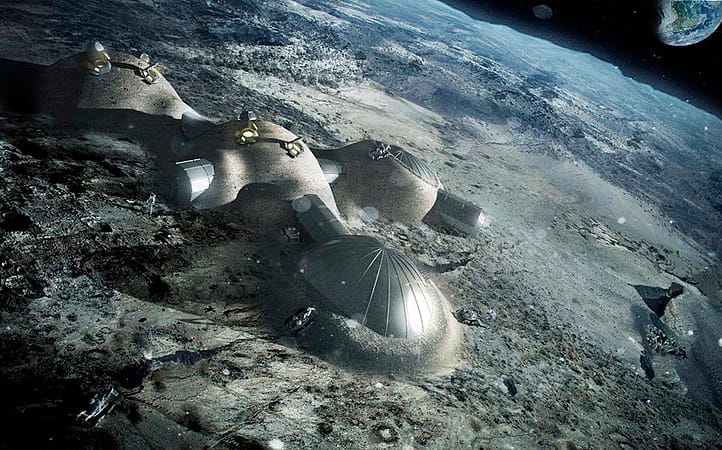The new material could help construct lunar bases like the concept shown above using less energy than current additive manufacturing methods. Image credit: ESA
PISCES is launching a new research project in materials science that will address some of the challenges of building infrastructure on other planets. The agency is submitting a grant proposal to the NASA Institute for Advanced Concepts (NIAC) Phase I program for a low-energy, high-strength basalt composite that could be sourced from ordinary terrain in-situ.
The proposal seeks funding to research a specific binder composite of basalt regolith for use as a construction material on the Moon and Mars. The binder uses minimal energy to cure and produces a highly durable composite material that can withstand high temperatures. PISCES’ study will investigate the processes and energy required in a vacuum to synthesize this binder using only native resources found on the Moon and Mars. It will also identify technologies and strategies needed to gather the necessary components used to synthesize the material, as well as energy sources and inputs.
Basalt-based materials would provide the raw ingredients to build launch and landing pads, which require high heat tolerance to withstand rocket plumes. They could also be used to construct berms to deflect dust from launch and landing blasts, build habitats and shelters for equipment, personnel and assets, and pave roads and walkways.
“Currently, most construction designs depend on additive manufacturing methods with the most common feedstock for lunar and Mars applications being a mix of regolith and binders transported from Earth,” said Operations Manager Christian Andersen, who wrote the project proposal. “These methods are either very energy intensive or extremely expensive.”
The proposed composite could make construction on other planets more efficient and financially feasible while solving one of many challenges inherent in space settlement: building infrastructure millions of miles from Earth with limited resources on-hand.
The NIAC program funds potential breakthrough technologies in early development for potential use in future space missions. The program provides up to $125,000 for nine-month studies and funds about 12 to 18 projects each year. The NIAC Phase I awardees will be announced in April 2020.
